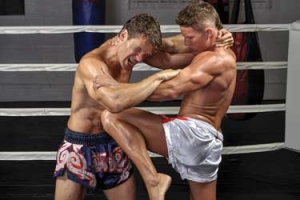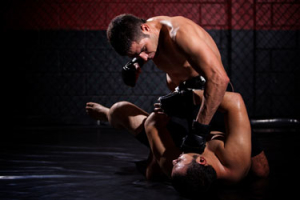Dispelling some of the misconceptions surrounding strength training for fighters.
Strength training will make you bulky!
It always amazes me how many individuals fill their faces with thousands of calories, limit their “cardio” and lift heavy weights every day (with the sole goal of bulking up), and still struggle to build a decent amount of muscle. However, your average fighter, who is often on a calorie deficit and smashing countless conditioning sessions each week, can look at a barbell and gain so much muscle, that it impedes performance – talk about good genetics!
In all seriousness, strength training will build lean muscle. However, while on a diet that is not providing a calorie surplus, and carrying out the amount of physical training that the average fighter partakes in. Two to three specifically designed strength sessions, each of which last no more than an hour, are not going to promote excessive development of muscle mass – if it does, you should take up bodybuilding.
Strength training slows you down!
If you incorporate copious amounts of training that concentrates on maximal effort strength, you are going to develop your capacity to produce force. However, this doesn’t necessarily transfer to your ability to produce force with speed (power).
Therefore, if you concentrate excessively on the development of maximal strength, then you may build muscle that is not necessarily fit for purpose, which could slow you down. Especially if you overly develop muscle groups that don’t necessarily compliment the muscles required for various sports specific movements i.e. strikes.
However, there is a reoccurring theme here. When I talk about strength training negatively effecting your performance, it’s always described as “excessive amounts”.
So yes, a fighter should not prioritise their time around maximal lifting. However, physiology clearly shows why maximal strength training is vital for optimal performance.
Without going too deep into anatomy and physiology, our muscles are made up of fast and slow twitch muscle fibres, and it’s the fast twitch muscle fibres which are responsible for power. Therefore, it is essential that these muscle fibres are targeted.
If you want to get your fast twitch fibres working, then the best way to do this is working at high intensities, or more specifically, working with heavy weights.
Incorporate enough maximal strength training to maximise your ability to produce massive amounts of force and ultimately develop your ability to express this new-found strength as power, and you will be the best athlete you can be.
Note: The job of a Strength & Conditioning coach is to create a programme that compliments an individuals sport… Not develop a programme that is trying to turn them into a competitive lifter.
Thanks for reading
Jay
Follow us on:
Facebook: www.facebook.com/5sfitnessuk
Twitter: www.twitter.com/5sfitness
Instagram: www.instagram.com/5s_fitness
YouTube: www.youtube.com/channel/UC66XVf9NZBO8j-V4or5d2Tg



